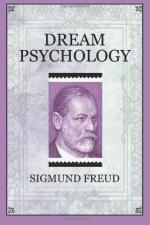Let us recapitulate by saying that we call such a stream of thought a foreconscious one, that we believe it to be perfectly correct, and that it may just as well be a more neglected one or an interrupted and suppressed one. Let us also state frankly in what manner we conceive this presentation course. We believe that a certain sum of excitement, which we call occupation energy, is displaced from an end-presentation along the association paths selected by that end-presentation. A “neglected” stream of thought has received no such occupation, and from a “suppressed” or “rejected” one this occupation has been withdrawn; both have thus been left to their own emotions. The end-stream of thought stocked with energy is under certain conditions able to draw to itself the attention of consciousness, through which means it then receives a “surplus of energy.” We shall be obliged somewhat later to elucidate our assumption concerning the nature and activity of consciousness.
A train of thought thus incited in the Forec. may either disappear spontaneously or continue. The former issue we conceive as follows: It diffuses its energy through all the association paths emanating from it, and throws the entire chain of ideas into a state of excitement which, after lasting for a while, subsides through the transformation of the excitement requiring an outlet into dormant energy.[1] If this first issue is brought about the process has no further significance for the dream formation. But other




